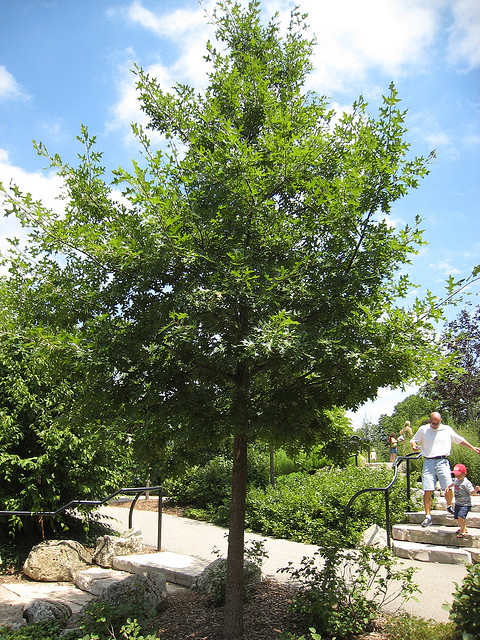Last post, we began our backyard for the birds landscape design. We had the circular design theme picked out and applied to our patio, planting beds and turf shapes. We also added a small curved path connecting the two turf areas. When we finished it looked like this.
What does a backyard for the birds need?
Before we get too far with our design, it’s probably a good idea to consider the needs of the birds we are trying to attract to our landscape. According to the National Wildlife Federation, every wildlife friendly garden needs 4 things.
- Food – Everybody get hungry. Planting native plants is the easiest way to provide the foliage (that insects the birds eat need), berries, seeds and nuts need to survive. You can also include supplemental feeders and food sources.
- Water Supply – Birds need clean water for many purposes, including drinking and bathing. Water sources can include features such as bird baths, installed ponds or rain gardens.
- Cover for Wildlife – Birds need places to hide in order to be safe from predators, weather and people. Native vegetation, shrubs, brush piles or even dead trees all can work.
- Place to Raise Their Young – Birds need a sheltered place to raise their young. Many places for cover can double as locations where birds can raise young.
Adding Water
Now that we know some of the things we need to incorporate into our backyard for the birds, lets add a source of water.
Bird baths are the traditional and probably easiest source of water that we can add to a landscape. I would probably add one to this design also. But they also require regular tending by washing out and refilling regularly.
For this design, we will add a small pond for an always filled and accessible source of water for our birds. Even if we are away for a week, the pond will still be there for the birds to use. If we add a bubblier to it, we can even keep a hole in it open in the winter.
This backyard for the birds design looks pretty drab in black and white, so I am going to add some color to our design as well as our pond. I also decided to change my patio from red brick to a stone pavers.

Adding shade trees
It’s about time to add some plants to our plan. The first plants we will add will be the largest, the shade trees.
I could go on for hours about selecting a shade tree. I won’t.
We will pick a shade tree that is:
- Native to the area
- Has high wildlife value
- Is attractive and durable
- Has excellent fall color
In my area of northern Illinois, there are several excellent trees that meet all of these needs. However, as I wrote in Would you want a 70 foot statue in your yard? few trees are more valuable to our native wildlife than the oaks.
Restoring large stands of oaks to suburbia would go a long way toward shoring up the future of our nation’s biodiversity. – Douglas Tallamy author of Bringing Nature Home: How You Can Sustain Wildlife with Native Plants
*
Not only do oak acorns feed many bird including wild turkey, bluejays, and redheaded woodpeckers, their leaves also feed many insects that birds feed their young.
In my area there are several excellent native oaks I could use. These include White, Burr, Swamp White, Chinkapin, Red, Pin, and the one that I will choose, Hills oak (Quercus ellipsoidalis).
So what kind of oak is that?
There is a lot of confusion and disagreement between biologists whether this is a separate species from another oak commonly called the Scarlet Oak (Quercus coccinea). Since more nurseries tend to sell the Scarlet Oak, we will call it that from now on. The truly geeky among us can read this paper on the confusion between Hill’s Oak and Scarlet oak.

photo credit: nautical2k via photopin cc
I will choose three of the same tree to help create a cohesive design. We could change one or two to another species to add diversity, but for now lets stick with three of the same tree.

Next time, we will add the rest of the trees for our backyard for the birds.

Leave a Reply